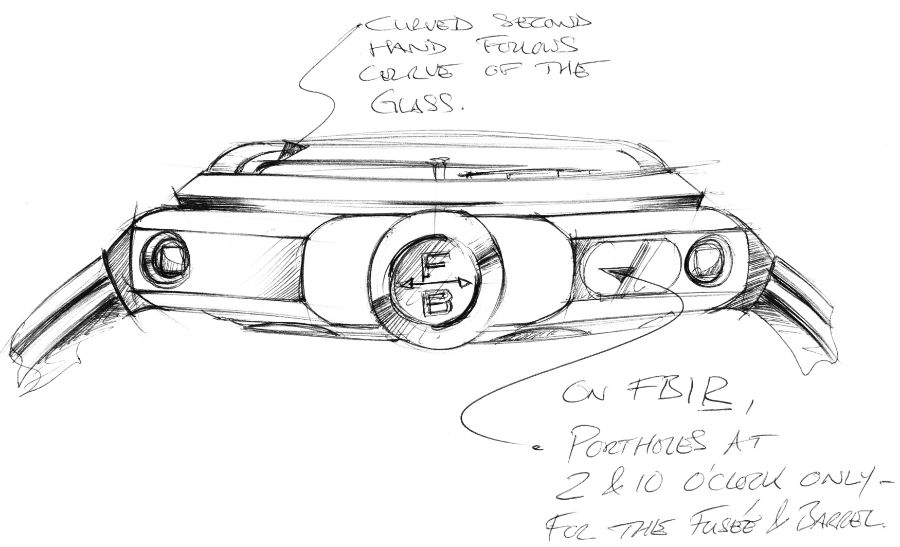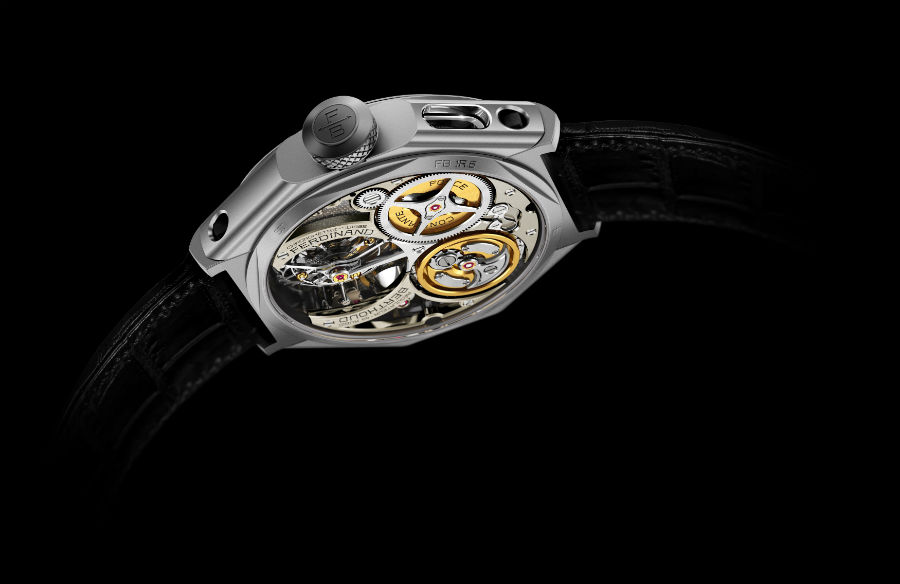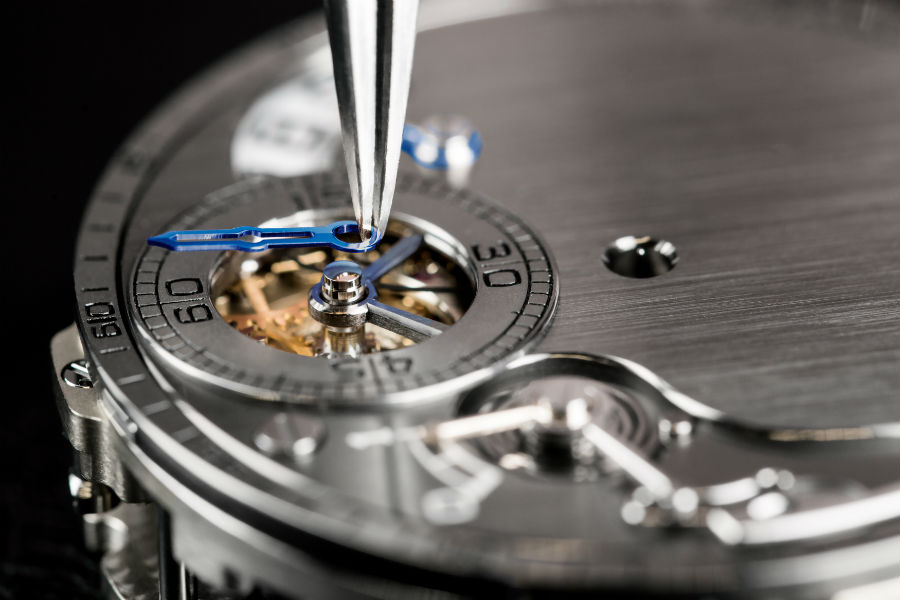The Chronometre FB-1R.6-1 features a new presentation that radically transforms the classic exceptionalism of its predecessors in the Chronométrie Ferdinand Berthoud collection. Yet despite this radical transformation, the quality of its construction and production remain true to their underlying philosophy.

Rare and unusual-looking, the Chronometre FB-1R.6-1 is a comprehensive, horological work. To round off its oeuvre, it’s issued in a limited edition of only 20 pieces, and intended only for discerning and passionate collectors.
A Philosophy of Excellence

The philosophy upheld by Chronométrie Ferdinand Berthoud involves transposing the pursuit of excellence into contemporary language, and it’s no different with the Chronometre FB-1R.6-1.
Like the previous editions of the Chronomètre FB 1, it has a movement equipped with horological complications. These complications are in turn inspired by the scientific instruments represented by Ferdinand Berthoud’s marine chronometers. It takes its cues in appearance from the Marine Chronometer no. 7.
The variety in design of the different versions of the Chronomètre Ferdinand Berthoud FB 1 stem from innovation in their horological approach. Everything, from the design, movement, to the finishing, is highly specific and reflects an uncompromising commitment to excellence. One that is encompassed by the Chronométrie Ferdinand Berthoud brand.
An Evolving Design

The Chronomètre Ferdinand Berthoud FB 1R.6-1 features some unusual details and a unique presentation in its design. It’s still a 44mm diameter watch, with a less than 14mm thick case that sits naturally and comfortably on the wrist.
A steel cylinder houses the movement, but it’s not just normal steel. The molecular structure of the steel has been reinforced by a thermo-chemical process. What this results in is a steel with an exceptional surface hardness, extremely robust and corrosion-resistant.
Instead of featuring a high-up opening that provides a view of the tourbillon and the fourth wheel, as in previous versions, it has a mostly solid dial. The rear side of the complication plate provides the regulator-type display, in a change from other existing regulator-type displays.

It’s made of nickel silver, vertically satin-brushed by hand, and black rhodium-plated. Of the three small apertures, the first shows the hours, the second the original power-reserve display mechanism, and the last a pyramid motif. Meanwhile, the seconds appear around the rim of the dial on a flat inner bezel ring made of black rhodium-plated, bead-blasted and chamfered nickel silver.
Finally, the nature and provenance of the watch can be found on the dial, in the engraved inscription “Chronomètre Val-de-Travers Suisse”. This engraving more than merely represents a signature or an appellation of origin. It proudly proclaims the model’s identity.
A Slender, Finely Structured Movement

The FB-T.FC.R calibre is built according to a unique architectural concept. This hand-wound movement features 18 nickel silver bridges, framed by polished titanium pillars surrounding the mechanical organs. This construction is typical of 18th century marine chronometers. The design of all the components echoes the architectural approach, especially in the symmetrical equilibrium of the movement.
Noble Materials, Accurate Workmanship

The bridges of the calibre are made of untreated nickel silver, a copper, zinc, and nickel alloy. This alloy is particularly shiny when polished, but also extremely fragile. Any imperfection is irreparable, making quality imperative.
Here, it coexists with scratch resistant steel, which in turn is finished with meticulous care. This type of steel is also currently used in the aerospace industry, and is a nod to the maritime expeditions of the original Ferdinand Berthoud.

These finishing operations are done entirely by hand using traditional tools. The quality control of this finishing is performed at a far higher degree of magnification than usual. Under such intense scrutiny, no detail, however tiny, goes unnoticed. No error, imperfection, or insufficiency is tolerated.
The end result is a testament to quality and horological excellence, and a respect for watchmaking tradition.








